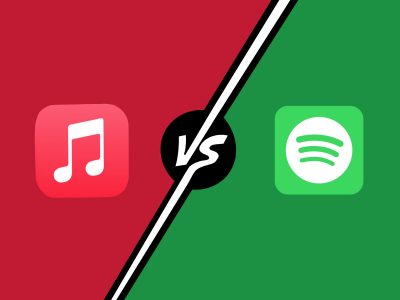Settling the debate — Apple Music or Spotify? – The Daily Free Press
The rivalry between Apple Music and Spotify ran on for a long time. The end of the year is a battlefield. Spotify Wrapped occupies almost all my Instagram stories; the rest is Apple Music Replay. Somewhere along the way, listeners involuntarily fall into a category named under the music app. The market has tagged these trademarks on every one of their users.
For five dollars, would you subscribe to Apple Music or Spotify?

On the basis, most Apple Music and Spotify’s monthly subscriptions are parallel — Student, Individual and Family. Besides a dollar more on Apple Music, the two services mark no apparent difference in music streaming, quantity or quality on the surface.
What is the difference between Apple Music and Spotify?
Spotify has more than double paying users as Apple Music, and a reasonable explanation could be the fact they have over 5 million podcasts. A celebrated algorithm and variable coverage helped Spotify to attract beyond just music lovers.
Apple Music focuses on music – features like Dolby Atmos, lossless audio, and even Apple Music Sing allow me to explore tracks in different ways. But sometimes, these features are so integrated that they shine less than the names.
Technical issues are fixable, but what about human factors?
Customer loyalty, a common theme discussed in communication and marketing, describes an ongoing and positive relationship between customers and the business, driving continuous purchases and participation. This idea is essential to subscription service providers like Apple Music and Spotify because it is a stake in business growth.
The consequences are campaigns like year-end reports, Only You messages and Listening Personality types. This engages you and me in concert — a conversation starter, an ice-breaking topic and a bonding opportunity. The shared experience is handy for any social purpose.
Playlists are the same way. You can follow friends on these platforms to keep up with their music trends and collaborate on playlists. It’s no different from social media. A streaming app can also be a communication tool where music is the language.
Similar to social media, the connection in music became demanding as services turned mobile, and on a higher level. With that, the interaction also increases — the desire to find someone who also enjoys Playboi Carti or Tyler, the Creator. Listeners of mainstream artists are less bothered, but fans of the smaller niche could really make use of this interaction.
But these interpersonal connections have a premise — the same music platform. Sure, you can share your favorite Drake song with your friends, but only in titles and not direct links. You can still show your techno playlist to your friends, but in screenshots, not apps.
What I see is an invisible community building upon an app.
“So, do you use Apple Music or Spotify?”
From what I learned, most people choose under the influence of others, family or friends. Like a chain reaction, new users follow the existing users to match their listening experience. Campaigns and playlists reinforce exclusive participation in a platform.
I thought of the question as selective exposure — the tendency to find like-minded people. In this case, it would be Apple Music users or Spotify users, and people who are consistent with your preference.
The music industry has a tradition of labeling fans, even with nicknames; BTS call their fans ARMY, and Charli XCX calls her fans Charli’s Angels. But when do we start to label each other by the music streaming service they use?






